Fast non-rigid registration of medical images is very difficult because
there can easily be 8 million voxels in an image. Many algorithms require
3 to 4 hours to complete. We created a non-rigid registration that
completes in 5 minutes, by changing the dominant computational complexity
of the process. The computational complexity is dominated by the number of
nodes in a tetrahedral mesh used to represent the displacement field, which
using adaptive methods I created can be around 10 thousand nodes. The
problem changes from order 8 million to order 10 thousand, and the
registration problem can be solved in 5 minutes rather than 3 or 4
hours.
Top Left: Brain image 3 hours into surgery, with edges hilighted.
Top Right: Brain image 4 hours into surgery, with the edges from the Top
Left. Note that most of the disagreement is near the incision.
Bottom Left: the same edges shown overlaying the deformed brain image -- the
motion of the brain was accurately captured.
Bottom right: projection of the adaptive tetrahedral mesh. Note that the
mesh is much more dense near the incision.
|

|

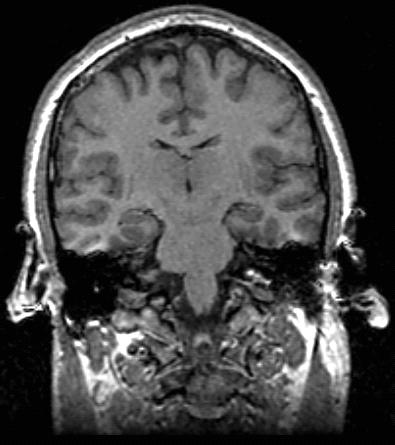
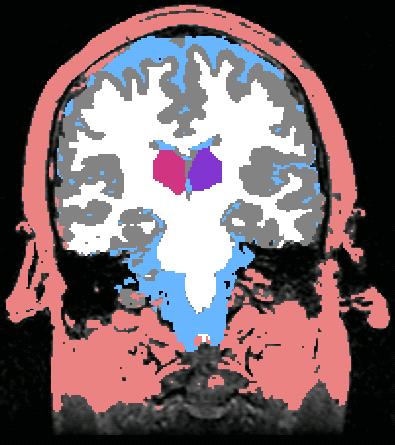
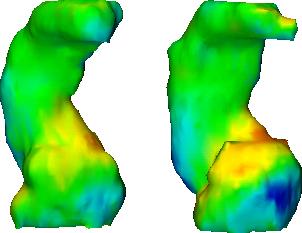
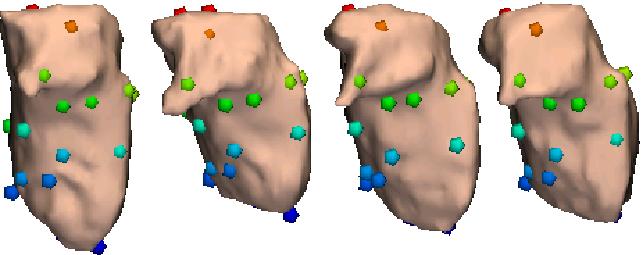
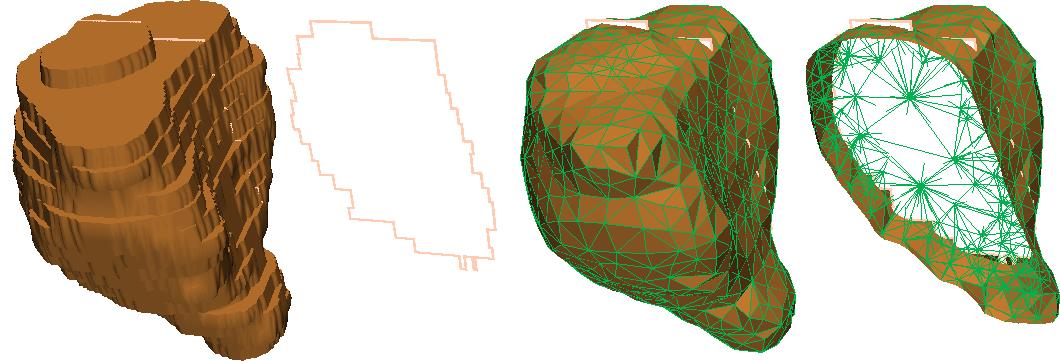
 ai
ai mit
mit